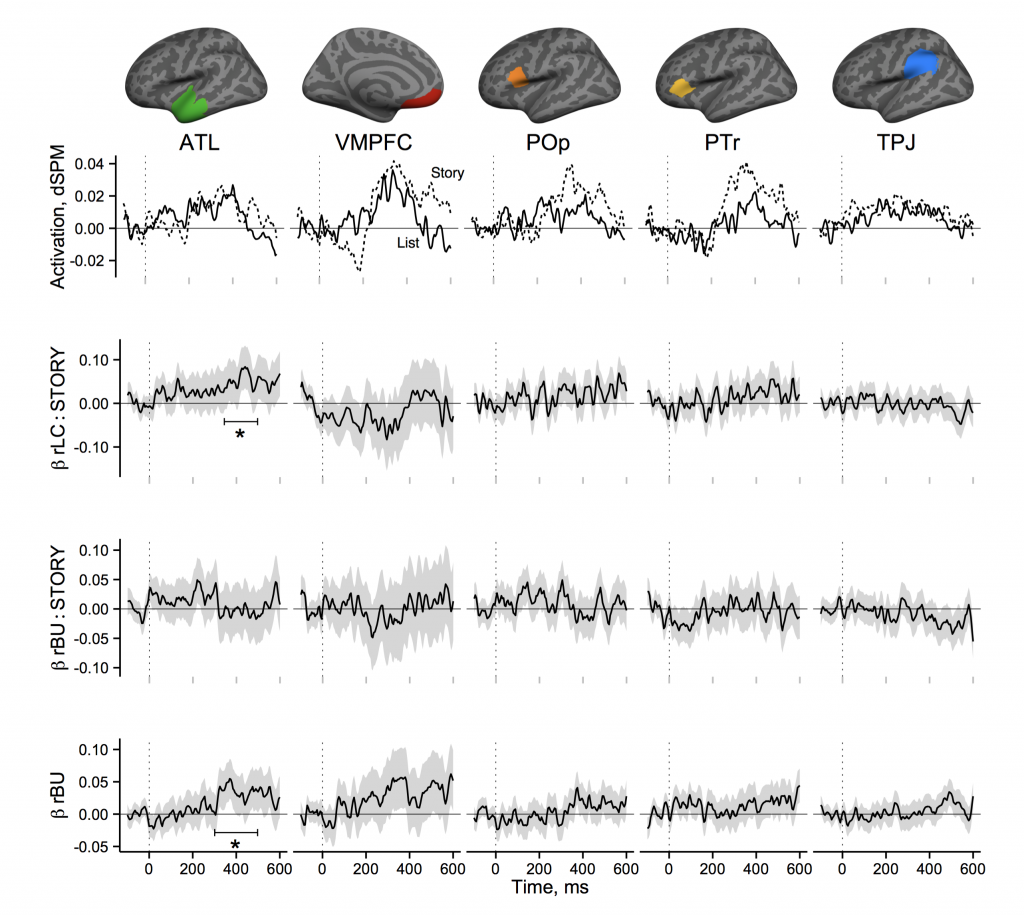A lot of previous research links parts of the left temporal and left frontal lobes with aspects of sentence comprehension. But, the procedure carried out in these regions has not been investigated. In a new paper, we test the specific sentence processing algorithm that is implemented in these regions. With Liina Pylkkänen, we modeled two parsing strategies, one predictive “left-corner“, and one less predictive “bottom-up” strategy, and test which strategy better aligns with brain activity that was recorded with MEG. Activity in the left anterior temporal lobe correlates with the number of nodes predictively postulated by the left-corner parser, beginning around 350 ms after word onset.
Brennan, J. R. & Pylkkänen, L. (Forthcoming). MEG evidence for incremental sentence composition in the anterior temporal lobe. Cognitive Science [link]
Check out the abstract and key figure, below
Research investigating the brain basis of language comprehension has associated the left anterior temporal lobe (ATL) with sentence-level combinatorics. Using magnetoencephalography (MEG), we test the parsing strategy implemented in this brain region. The number of incremental parse steps from a predictive left-corner parsing strategy that is supported by psycholinguistic research is compared with those from a less-predictive strategy. We test for a correlation between parse steps and source-localized MEG activity recorded while participants read a story. Left-corner parse steps correlated with activity in the left ATL around 350–500 ms after word onset. No other correlations specific to sentence comprehension were observed. These data indicate that the left ATL engages in combinatoric processing that is well characterized by a predictive left-corner parsing strategy.


